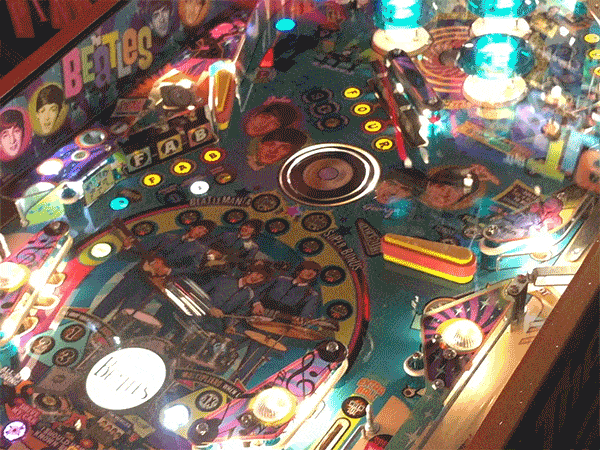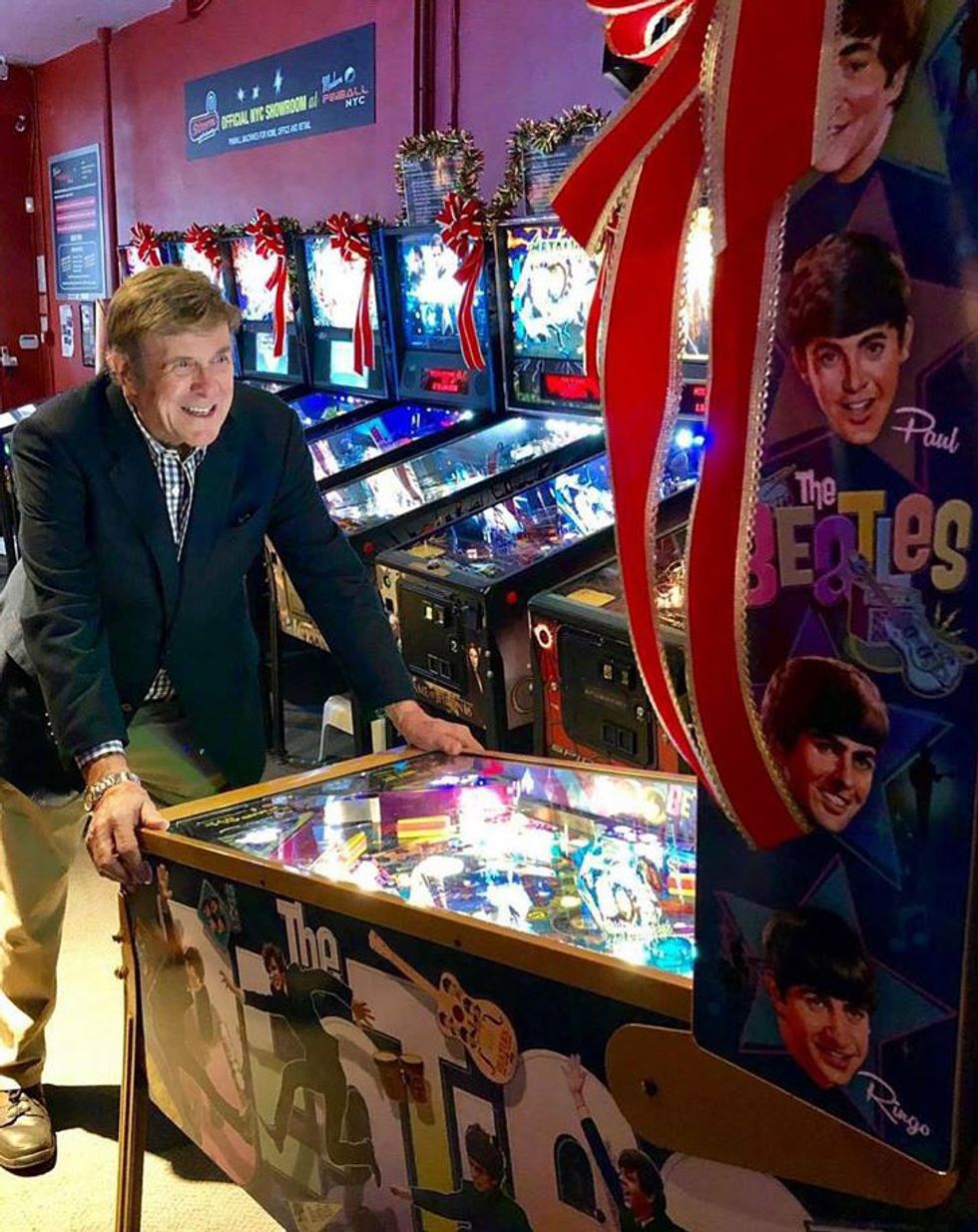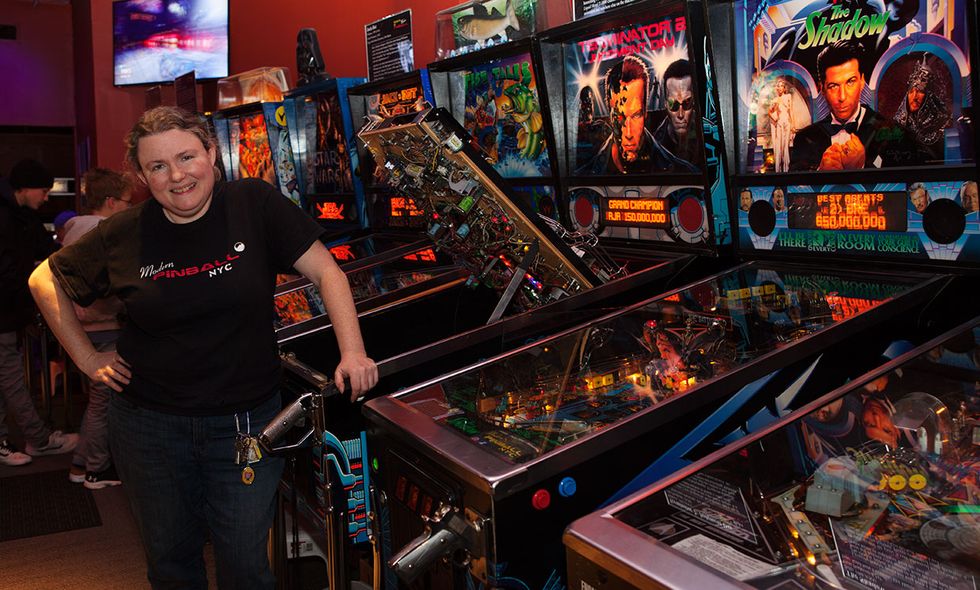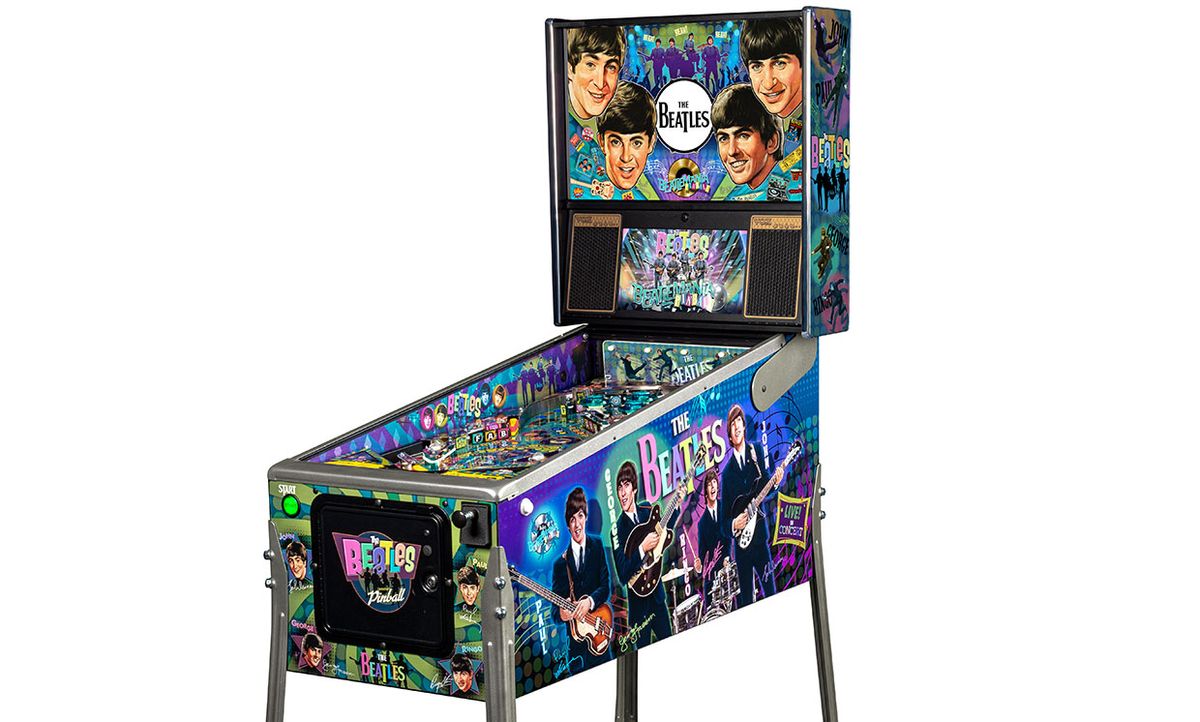If you think pinball—the original electric arcade game—is dead or dying, you’d be wrong. With rippling colors, streaking silver balls, and a superior soundtrack, last Friday saw the unveiling of a new Beatles-themed pinball machine in New York City. Stern Pinball’s game isn’t just fun to play though. It’s a marker of a global revival of interest in pinball, driven in part by a surprising ripple effect of e-commerce.
Stern Pinball designs and assembles its own machines, employing over 300 people in a 10,000-square-meter plant close to Chicago’s O’Hare airport. According to CEO Gary Stern, sales are brisk: “We had 40 percent sales growth in 2016, and 40 percent sales growth in 2017. Coming off those years, growth has been a little slower, with 25 percent in 2018.”
Stern sells most of his inventory to the export market, but has seen growth in domestic sales as well, helped by the increasing numbers of family entertainment centers (FECs), which are essentially indoor amusement parks. More FECs are opening up because it’s gotten easier to find suitable real estate. “Empty big box stores are available because of retail’s shift to online storefronts,” says Stern.

The Beatles game represents a new market for Stern: superfans who want to collect everything related to their object of fascination. Stern usually designs three games a year, produced in different versions for arcade operators, regular consumers, and pinball enthusiasts. The design process takes about 14 months, says Stern, and they focus on creating games inspired by globally-popular entertainment franchises, such as Star Wars or Guardians of the Galaxy. A typical game takes 3.5 days to assemble and contains about 3,500 parts and 400 meters of wire.

The Beatles game is controlled by a 1 gigahertz, dual core, i.MX 6 Arm-based processor. At the launch event, held at Modern Pinball NYC, its sophistication stood in stark contrast to a machine just a few meters away, the 1974 space-themed Skylab game. Skylab represents the last generation of pinball machines before the advent of solid-state electronic control: its “CPU” is a motor-driven shaft fitted with a row of cams. As the shaft rotates in response to trigger events, the cams open and close a bank of relay switches.
Skylab wasn’t just there for the launch; it’s a permanent attraction at Modern Pinball, which occupies a narrow storefront in midtown Manhattan. As well as a showroom for new games, Modern Pinball is also a recognized museum of old games. It was founded in 2013 by Steve Zahler, who agrees there is a resurgence of interest in pinball accompanying a renaissance in game design. “Pinball isn’t just back, it’s better,” he says.
For the older machines, Zahler’s goal is to restore them to a state where visitors can play them. “Depending on the condition, it takes a month or two,” he says. Sometimes plastic parts will have warped over time, but the gentle application of a heat gun can be used to tease them back into shape. Other times, the machines need replacement parts that are no longer available, but new technology has come to the rescue: “3D printing is a miracle come true for pinball repairers,” says Zahler, “It’s a rewarding feeling, bringing them back from the dead.”

That’s a feeling shared by Zahler’s apprentice, Beth Senturia. A year ago, Senturia left her career as an insurance agent and retirement planner to become Modern Pinball’s manager on one condition: that Zahler teach her how to repair pinball machines.
“It’s like working at Disney World, only better,” Senturia says of her job, which often involves fixing machines that break down on the fly. This can happen up to three times a day and can involve rebuilding a flipper or diagnosing and soldering a broken connection. “Every day I get to see people having fun, plus I get to work with my hands and take something that was broken and make it not be broken,” she says.
Senturia was introduced to pinball by her father when she was a small child, and played throughout high school. When Modern Pinball opened, Senturia started playing in tournaments (she is currently in 63rd place in the women’s world ranking of pinball players) and then became a museum volunteer before being offered the manager’s job. Senturia says she leapt at the chance to learn pinball repair because she always had an interest in things that were electronic or mechanical, but didn’t pursue it when she was younger because “as a middle class girl in the Midwest, you’re not going to do that. But now, 35 years later, I had an opportunity to learn… It was finally time to do what I wanted to do.” Senturia looked over the twin rows of glowing, flashing, ringing machines that line the walls at Modern Pinball and smiled: “I have never been happier.”
A version of this post appears in the February 2019 print magazine as “Pinball’s High-Tech Rebirth.”
